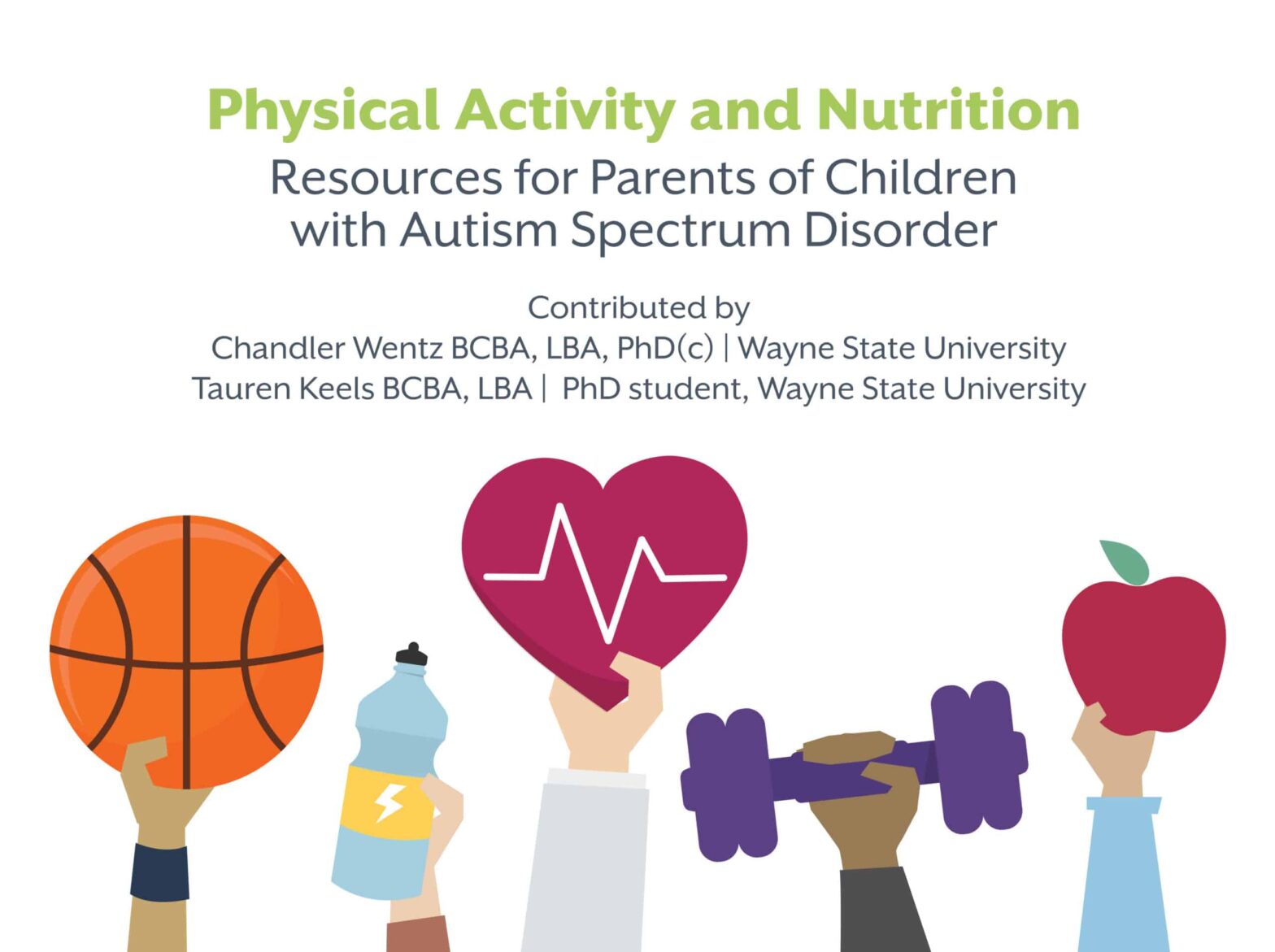Traditional behavioral interventions focus on core deficits associated with autism spectrum disorder (ASD), despite the presence of health differences. In fact, children with ASD experience significant health differences beyond their core deficits. Recent publications suggest children with ASD are 40% more likely than their neurotypical peers to be overweight or obese. Obesity threatens an individual’s quality of life, opportunity for independent living, self-care, and long-term health outcome. Multiple factors have the potential to impact health differences among children with ASD such as; sleep disorders, lack of physical activity, and food selectivity.
The purpose of this article is to draw attention to the growing health differences among children with ASD, and to identify resources that caregivers can use to promote the health and wellbeing of their child with ASD. It is generally accepted by clinicians and parents that children with ASD have more food aversions than their same-aged typical peers. Feeding problems put children with autism at risk for major health problems such as malnutrition, and psychological and social deficits. Typically, parents report that children are avoiding foods based on texture of the food presented or refusing of novel foods. This avoidant/refusal of food can lead to physical, nutritional and even social deficits for children with Autism.
Despite the barriers that are present for many individuals with ASD to be physically active, there are some simple ways that family members can encourage and build in additional opportunities for their children. One way is for family members to identify activities that their child enjoys such as jumping on a trampoline, running, swimming, or riding a bicycle. Once the activity is identified the caregiver should work to increase the duration that the child engages in the prescribed activity.
Many strategies that families are already using throughout day can be utilized to encourage physical activity, such as choice boards, first/then charts, and social stories. Another way is to introduce ‘small bursts’ of physical activity, 5 to 10 minutes in duration, throughout the day as transitions or breaks from school, work task, and screen time. Small bursts of physical active can take the form of a dance party, walking around the neighborhood, following along with a yoga routine, playing catch with the dog, or simple exercises found online such as GoNoodle.com as well as the resources listed below.
Being physically active as a family is a great way to increase physical activity for individuals with ASD. With respect to food selectivity, slow and consistent introduction of novel food is the general rule when introducing new foods. Parents should try to present the food on the child’s plate and provide social praise for tolerating the item being present on their plate. When presenting the food on the plate, try to avoid any demands to eat the food or to interact with it beyond its presence on the plate. Try this slow introduction to tolerating the food on the plate for at least 3 days in a row with the absence of a refusal. Next encourage the child to touch the food with their hands. If the child touches their food, provide social praise for touching and interacting with the novel food. Finally continue to progress by having the child touch the food to their lips, then their tongue, hold the food in their mouth and then eat the food. Throughout this process it is important to model trying the consumption of food yourself, as well as providing social praise for the absence of refusal.
To address the well-documented lack of accessible physical health and nutrition programs, the Center for Health and Community Impact (CHCI) at Wayne State University (WSU) developed the Physical Literacy and Nutrition Education (PLANE) program. PLANE has been generously funded by the Michigan Health Endowment Fund, Nutrition and Healthy Lifestyles grantmaking program. It is a comprehensive 2-year long, both online and in-person program to address the complex issues contributing to health disparities among children with ASD and their families. The goal of PLANE is to promote positive health and well-being in children with ASD through various types of physical activities and exposure to a variety of health food options.
Please feel free to check out some FREE resources at www.soarwithplane.org. The principal investigator (PI) for this program is Dr. Leah Ketcheson, assistant professor of Health and Physical Education at Wayne State University (leah.ketcheson@wayne.edu).
Additional Resources
Physical Activity:
https://www.bokskids.org/downloads/
https://www.exercisebuddy.com/
https://www.playworks.org/get-involved/play-at-home/
https://resources.specialolympics.org/sports-essentials/young-athletes/young-athletes-at-home
https://www.shapeamerica.org/covid19-resources.aspx
Feeding:

